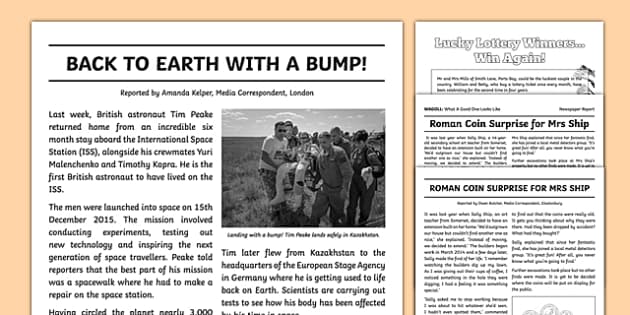Not known Factual Statements About News Articles
Table of ContentsThe Of News ArticlesThe Facts About News Articles UncoveredEverything about News ArticlesLittle Known Facts About News Articles.Things about News Articles
Good understanding of different subjects offers students an affordable side over their peers. Although digital and social media are conveniently accessible, we must not neglect how vital it is to read the papers. Moms and dads should attempt and instill the practice of reviewing a paper as a daily regimen to proceed the legacy of the adored print tool.News stories also have at the very least one of the adhering to vital qualities family member to the designated audience: proximity, prominence, timeliness, human interest, strangeness, or effect.
Within these restrictions, information tales additionally intend to be detailed. Nonetheless, various other elements are included, some stylistic and some obtained from the media type. Amongst the bigger and much more revered papers, fairness and balance is a significant aspect in providing information. Discourse is generally restricted to a separate area, though each paper might have a different overall slant.
Newspapers with a worldwide audience, for instance, often tend to utilize a much more official style of writing. The details options made by an information outlet's editor or content board are usually gathered in a design guide; usual style overviews include the and the United States News Design Book. The major goals of information writing can be summarized by the ABCs of journalism: precision, brevity, and quality.
Facts About News Articles Uncovered
As a policy, reporters will not use a lengthy word when a brief one will do. News authors attempt to prevent utilizing the same word more than once in a paragraph (occasionally called an "resemble" or "word mirror").
Headings often omit the subject (e.g., "Leaps From Watercraft, Catches in Wheel") or verb (e.g., "Feline woman fortunate"). A subhead (likewise subhed, sub-headline, subheading, subtitle, deck or dek) can be either a subservient title under the primary headline, or the heading of a subsection of the write-up. It is a heading that comes before the main message, or a group of paragraphs of the major message.

Additional billboards of any of these kinds may show up later in the short article (specifically on subsequent pages) to tempt further analysis. Such billboards are likewise made use of as tips to the write-up in other areas of the magazine or site, or as ads for the item in various other publication or sites. Normal framework with title, lead paragraph (summary in strong), various other paragraphs (details) and get in touch with details.

Instance of a hard-lead paragraph NASA is suggesting an additional room job. The budget demands approximately $10 billion for the task.
An "off-lead" is the second most important front web page news of the day. To "bury the lead" is to begin the write-up with background details or information of secondary value to the viewers, forcing them to check out even more deeply right into an article than they must have to in order to uncover the More hints essential points.
A Biased View of News Articles
Usual use is that or 2 sentences each develop their very own paragraph. Journalists typically describe the organization or structure of an information tale as an upside down pyramid. The crucial and most intriguing components of a tale are put at the beginning, with sustaining info complying with in order of lessening importance.
It permits individuals to discover a subject to only the depth that their inquisitiveness takes them, and without the charge of information or nuances that they could consider unnecessary, yet still making that info offered to much more interested readers. The upside down pyramid structure also makes it possible websites for posts to be trimmed to any approximate length during format, to fit in the room readily available.
Some writers begin their stories with the "1-2-3 lead", yet there are several kinds of lead available. A twist can refer to multiple points: The last tale in the news broadcast; a "satisfied" tale to finish the show.
Longer short articles, such as publication cover write-ups and the items that lead the within sections of a newspaper, are recognized as. Feature stories vary from straight information in several methods.
A Biased View of News Articles
The journalist often details interactions with meeting topics, making the item a lot more individual. A feature's first paragraphs typically associate a fascinating minute or occasion, as in an "unscientific lead". From the particulars of a person or episode, its view quickly you could try here broadens to generalities about the story's topic. The area that signifies what an attribute has to do with is called the or signboard.

The Editor's Tool kit: A Reference Guide for Beginners and Professionals (2001) Allan M. Siegal and William G. Connolly. The New York City Times Manual of Design and Use: The Official Style Overview Made Use Of by the Writers and Editors of the World's Many Reliable Paper (2002) M. L. Stein, Susan Paterno, and R.